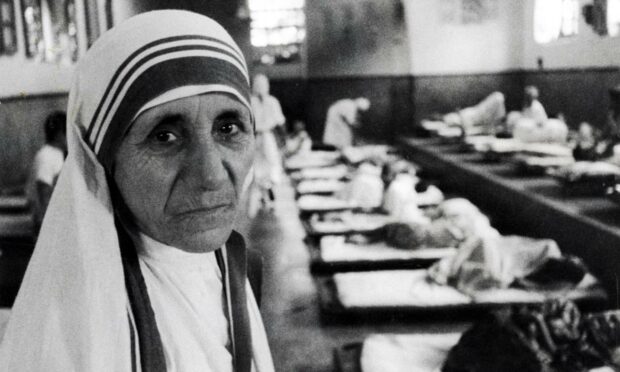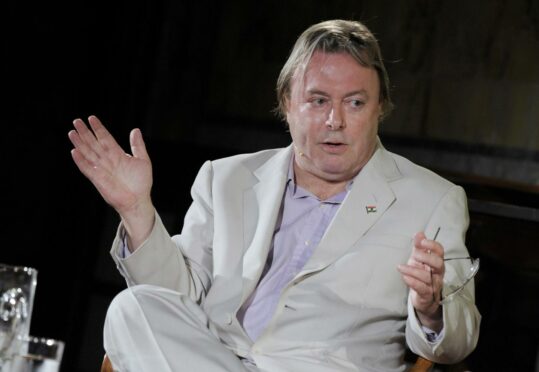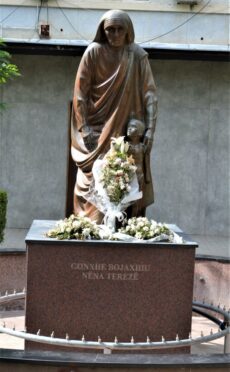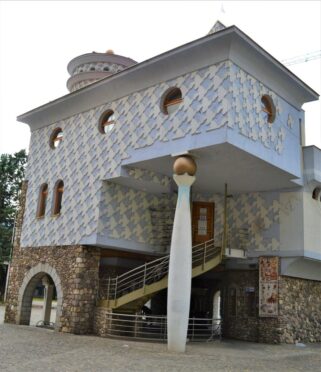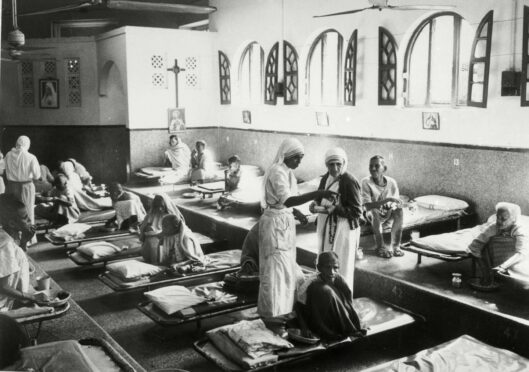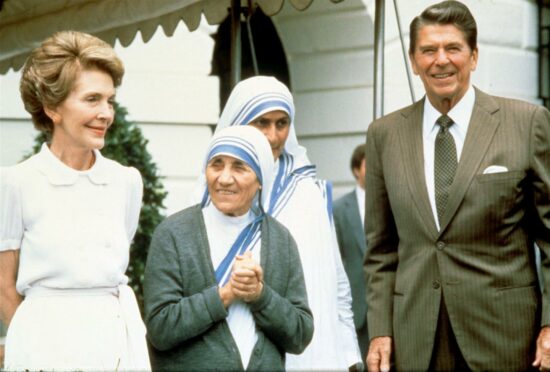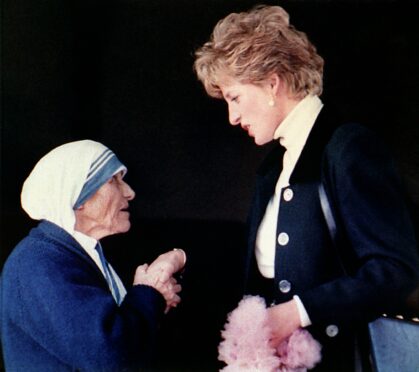Mother Teresa, real name, Anjeze Gonxhe Bojaxhiu, was born in Skopje, the city I have been in for weeks, and from where I am sitting writing this very column.
I’d always believed in the accepted narrative, that she was a wonderful caring woman.
Why would I even consider doubting it? I had no reason to. No one did.
It was 1997; I was a young man living in London. Mother Teresa had just died. Images flooded our TV screens. Often photographed wearing her white cotton sari with blue border and both hands clasped, front pages of all newspapers had glowing tributes to this humble, kind and compassionate woman.
I felt sad. Sad that she had died. But of course, and probably like nearly everyone else, I knew nothing about her.
The late, great Christopher Hitchens. I won’t say RIP Hitch, for that would be laughable. He was an atheist. A renowned atheist. Journalist, author, columnist and, mostly importantly, orator and debater.
I got into Hitch far too late in life. But same as getting into, say, Mozart or Sinatra too late, it doesn’t matter, for their work lives on, and thanks to modern technology, we can enjoy it for years to come.
Hitch has written so much, done countless interviews and debates, that I’ll be watching and learning from him until the day I drop.
And it’s not just religion he attacks. His book attacking Henry Kissinger is beyond powerful.
Hitch is not a guy who rambles on like some bloke down the pub. He is ridiculously clever, has studied all religions in-depth and often knows the holy books better than those he debates with. Be it priests, a rabbi, or imams, Hitch knows his onions.
Rarely, if ever, have I viewed a debate where the other side comes out on top. I highly recommend you watch them. Nearly all his debates are now on YouTube. They are utterly fascinating to watch.
In a nutshell, he sees all religion as false, harmful and authoritarian. It was his book, “God is not great” that really got me into him.
Interesting to note, despite his views, Hitch had friends all over the three Abrahamic religions. He was respected. I have Christian friends who admire him. You don’t need to agree with someone to respect them.
It was 2009, I think. I was living in Budapest; I was watching yet another one of his debates where he and Steven Fry debated with/against a bishop and Anne Widdecombe. The motion was, “The Catholic Church is a force for good in the world”.
Hitch and Fry destroyed them. It was like lambs to the slaughter.
Looking at the comments online, even from believers, nearly everyone agreed. Sorry, but Anne and the bishop were out of their depth. It was like sending a pub league football team out to play Liverpool.
I then clicked on another Hitch clip, “Hell’s Angel”. I was intrigued and within seconds it became clear it was about Mother Teresa. Yes, he was calling her, Hell’s Angel.
“Ah, come on, Hitch, you’ve crossed a line here,” I said to myself.
But of course, I watched it – sceptically at first.
Wow. Eyes open up time.
I then read his book on her, entitled “The Missionary Position”, which lead me to read more and more about Mother Teresa over the years. I couldn’t get enough. Criticism comes from far and wide, including India itself.
The accepted narrative
Mother Teresa was a saint. Literally. She dedicated her life to care for the dying and her kindness captured the public mood like no other.
In 1950, she founded the Missionaries of Charity, which eventually had hundreds of missions operating in over 100 countries. It ran homes for people who were dying of leprosy, TB and cancer, among others. She also ran orphanages and schools. Her work continues to this day.
In 1979, she was awarded the Nobel Peace Prize, and in September 2016, was canonised by the Catholic Church. She became Saint Teresa of Calcutta.
In order for this to happen, a miracle has to have been performed. They claim it happened when a locket containing the picture of Mother Teresa was placed on the abdomen of Monica Besra who had a tumour. She was, of course, miraculously cured.
A miracle.
However, the doctor who treated Monica Besra is on record as saying it was the drugs and treatment he gave her that saved her life. Not a miracle.
Mother Teresa died in September 1997 aged 87.
The charges against her
She actually believed that the suffering of the dying brought them closer to God. She glorified suffering. She created a cult of suffering.
Her clinics lacked medical care, diagnosis, adequate food, even hygiene.
The editor of the highly respected British medical journal The Lancet visited a home for the dying in Calcutta. He observed that sisters had little medical knowledge. He said he was disturbed that the approach to pain management seemed to be more “spiritual” than anything else.
“I was disturbed to learn that the formulary includes no strong analgesics. Along with the neglect of diagnosis, the lack of good analgesia marks Mother Teresa’s approach as clearly separate from the hospice movement. I know which I prefer.”
One volunteer who later spoke out claimed used syringes were often run under cold water then re-used. Everyone was given cold baths and patients with terminal cancer received only aspirin. In fact, many who worked in one of her homes have since spoken out about conditions in there.
Unfair you may think? They did the best they could? There must have been a serious lack of money?
Most definitely not.
Her mission raised untold hundreds of millions of dollars. What was it used for? Where is it? How much is there?
Fact is, she accepted donations from highly questionable characters including dictators, disgraced tycoon Robert Maxwell, and later convicted fraudster Charles Keating, among others.
Where did all this money go? Not on the dying, it seems. It’s claimed that she had so much money in the Vatican bank that if she withdrew it all, the bank would have been empty. It is also claimed that her mission was one of the richest in the world.
This should have made her clinics state-of-the art. She had the money to make them so.
One journalist who visited a home for the dying compared it to images of Belsen concentration camp.
And what of the dying patients who were asked if they would like a “ticket to heaven”. It is claimed that if they said yes, they were then, although they may have been Muslim or Hindu, secretly baptised as Christians.
Not only was she against abortion, she was against divorce and, of course, against all forms of contraception, which not only empower women but save millions of lives. She even referred to Aids as: “Just retribution for improper sexual conduct.”
The case against her goes on and on
Yet, her image is that of, well, a saint. Who created that? It seems us, the west, possibly the media. Or was it, was she, her image, a carefully planned and highly successful PR victory for the church?
Hitch said: “Mother Teresa was a fanatic, a fundamentalist and a fraud. She was not a friend of the poor. She was a friend of poverty. She said that suffering was a gift from God. She spent her life opposing the only known cure for poverty, which is the empowerment of women and the emancipation of them from a livestock version of compulsory reproduction.”
Hitchens said that her intention was not to help people, and that she lied to donors about how their contributions were used. He said: “It was by talking to her that I discovered, and she assured me, that she wasn’t working to alleviate poverty. She was working to expand the number of Catholics.”
She said: “I’m not a social worker. I don’t do it for this reason. I do it for Christ. I do it for the church.”
Watch the documentary, read Hitch’s book, and listen to the testaments of those who worked with her and/or visited her homes for the dying. And see what British/Indian physician Aroup Chatterjee has to say about her.
I’ll leave the last word to Mother Teresa herself.
“There is something beautiful in seeing the poor accept their lot, to suffer it like Christ’s Passion…”
